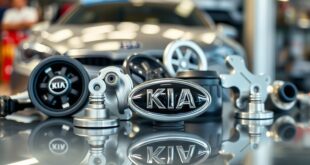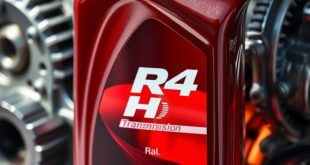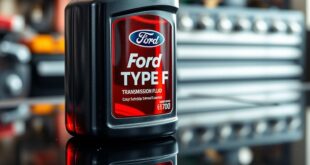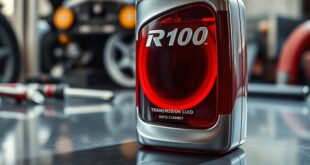If your windshield washer pump is bad, you might notice a humming noise when the wipers are activated, fluid leaks around the pump, or a dry reservoir. You might also hear a clicking sound when the wipers are on, indicating the pump is running without fluid. Other signs include visible leaks and clogged hoses. If these issues pop up, there are several steps you can take to diagnose and fix your washer pump problem.
Signs of a Malfunctioning Windshield Washer Pump
When your windshield washer pump starts to fail, you'll likely notice several warning signs.
You might hear a humming noise when activating the wipers, indicating bad bearings. Fluid leaks around the pump base or hoses can suggest cracks or damage. If the reservoir runs dry, it might be a sign of pump failure.
You may also hear a clicking noise when the wipers are on, which means the pump is trying to run without fluid. Visible leaks around the pump often signal potential issues that need immediate attention.
Keeping an eye on these signs can save you from bigger problems.
How to Test Your Windshield Washer Pump
To determine if your windshield washer pump is functioning properly, you'll want to perform a few simple tests. First, gather your supplies: a voltmeter, jumper cables, distilled water, and access to your vehicle's battery. Next, check the pump's voltage and continuity using the following table:
| Test Step | Action | Expected Result |
|---|---|---|
| Voltage Check | Measure at pump terminals | 12-14 volts |
| Jumper Cable Test | Connect battery to pump terminal | Pump activates |
| Continuity Test | Check wires with multimeter | Continuity present |
After these steps, activate your wipers and check for fluid.
Common Causes of Windshield Washer Pump Failure
After testing your windshield washer pump, it's important to understand what might cause it to fail in the first place.
A blown fuse is the most common culprit, cutting power to the pump. Internal malfunctions can also occur, leading to complete pump failure.
Electrical issues may disrupt the power supply, preventing the pump from functioning properly. Clogged hoses can block fluid flow, mimicking pump failure, while a damaged reservoir can hinder operation.
Regular maintenance can help avoid these problems, ensuring your washer system works efficiently when you need it most.
Solutions for a Non-Functioning Washer Pump
If your windshield washer pump isn't working, there are several effective solutions you can try to get it back in action.
First, check the fluid level in the reservoir and refill if it's empty.
If fluid's present but not spraying, inspect the nozzles for clogs and clean them.
Next, examine hoses for kinks or blockages, straightening any issues.
Don't forget to check the fuse box for blown fuses; replace any faulty ones.
Finally, if these steps don't resolve the problem, consider removing the pump to inspect for debris or blockages that could be hindering its function.
Understanding Windshield Washer Pump Lifespan
The lifespan of a windshield washer pump is essential to your vehicle's maintenance, as it directly impacts your ability to maintain clear visibility in various weather conditions.
Typically, these pumps last about two years, but this can vary based on your vehicle's make and model. Factors like the type of fluid you use and how often you engage the pump can also affect its longevity.
Frequent use may wear it out faster, while high-quality pumps tend to last longer. Keeping an eye on these elements can help you avoid unexpected pump failures and guarantee safe driving.
Importance of Quality in Pump Selection
When considering the longevity of your windshield washer pump, the quality of the pump you choose plays a significant role.
Opting for a high-quality pump not only guarantees better performance but can also extend its lifespan. Cheaper pumps may save you money upfront, but they often lead to frequent replacements and headaches down the road.
Additionally, a well-made pump typically withstands wear and tear better, providing consistent fluid flow when you need it most.
Investing in quality means you'll likely enjoy clearer visibility and a more reliable windshield washing experience, making your drives safer and more comfortable.
Maintenance Tips for Your Windshield Washer System
Regular maintenance of your windshield washer system can greatly enhance its performance and longevity. To keep it in top shape, check the fluid level regularly, and use the appropriate washer fluid. Inspect hoses for cracks or leaks, and clean nozzles to prevent clogs. Additionally, test the pump occasionally to verify it's functioning properly.
| Maintenance Task | Frequency | Notes |
|---|---|---|
| Check fluid level | Monthly | Refill if low |
| Inspect hoses | Every 6 months | Look for cracks/leaks |
| Clean nozzles | As needed | Use a needle or pin |
| Test pump functionality | Annually | Activate wipers to check |
Frequently Asked Questions
Can a Bad Windshield Washer Pump Affect Wiper Performance?
Yes, a bad windshield washer pump can affect wiper performance. If the pump isn't spraying fluid, your wipers can't effectively clear the windshield, leading to decreased visibility and potential safety hazards while driving.
Is It Safe to Drive With a Malfunctioning Washer Pump?
It's not safe to drive with a malfunctioning washer pump. Visibility can quickly diminish in rain or debris, increasing your risk of accidents. Make sure to address any issues before hitting the road.
How Can Weather Conditions Impact Washer Pump Function?
Weather conditions can greatly impact your washer pump's function. Freezing temperatures may cause fluid to freeze, while excessive heat can lead to fluid evaporation. Always make certain you're using appropriate fluid for the conditions to maintain performance.
Are There Any DIY Fixes for a Windshield Washer Pump?
Yes, you can DIY fix your windshield washer pump. Start by checking for fluid, inspecting hoses for kinks, cleaning nozzles, or replacing the fuse. If those don't work, consider removing the pump for deeper inspection.
What Should I Do if My Washer Fluid Freezes?
If your washer fluid freezes, you should immediately thaw it by warming the reservoir with a hairdryer. Then, replace it with a winter-grade fluid to prevent future freezing and guarantee proper function in cold weather.
 Car Service Land Coupons for Oil change, Tires, Wheel alignment, Brakes, Maintenance
Car Service Land Coupons for Oil change, Tires, Wheel alignment, Brakes, Maintenance




